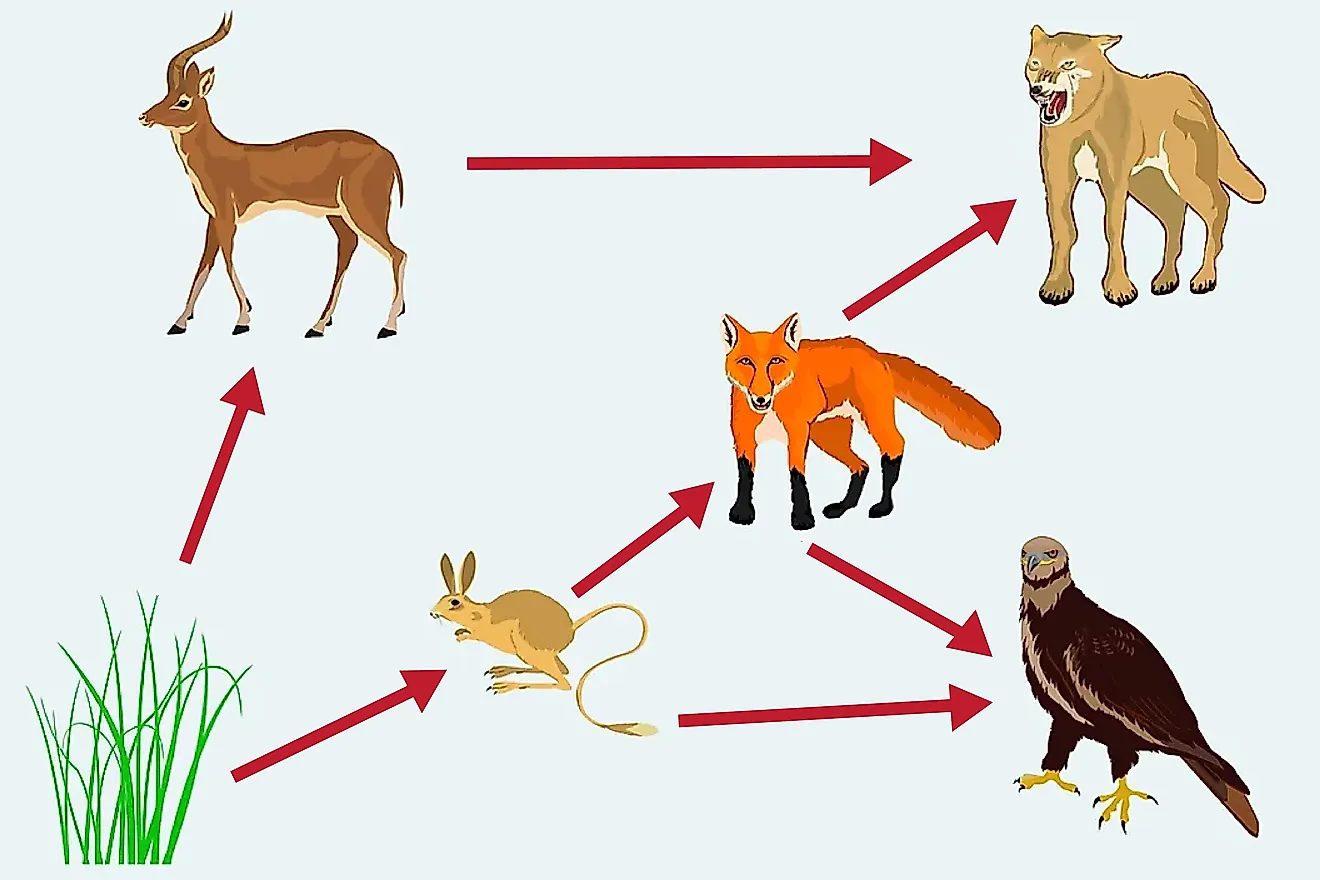What is a Food Web?

All forms of life in an ecosystem require energy to perform their various processes required for survival such as reproduction, growth and development, cell division, metabolism and hunting among others. The flow of energy and matter in any ecological system can be represented in a graphical representation called a food web. A food web, also known as a consumer resource system, is derived from an interconnection of food chains.
What Is a Food Chain?
Food chains are linear representations of the flow of energy in an ecosystem which helps us understand how energy is transferred directly from one organism to the next. At the base of a food chain are the primary producers. Above the primary producers are the primary consumers who are mainly herbivores or plant eaters. Above the primary consumers are secondary consumers who are carnivorous animals. Above the secondary consumers lie the tertiary consumers, consisting of carnivores that feed on carnivores. Above the tertiary consumers are the quaternary consumers that feed on tertiary consumers.
Forms of Life in an Ecological Community
Forms of life in any ecological community can be grouped into two groups, autotrophs and heterotrophs.
Autotrophs, otherwise known as producers or self-feeders, form the base of the food chains and food webs. Autotrophs are organisms that are capable of synthesizing organic matter from inorganic substances. There exist two types of autotrophs, photoautotrophs, and chemoautotrophs. Photoautotrophs derive energy from the sun in their synthesis of organic molecules in the process known as photosynthesis. Examples of the photoautotrophs are plants, algae, and cyanobacteria. Chemoautotrophs, on the other hand, synthesize organic molecules using energy that is derived from chemicals through a process referred to as chemosynthesis. The organic molecules synthesized by autotrophs are derived from materials such as minerals and gases like carbon dioxide.
Heterotrophs in an ecological community are also referred to as consumers. They comprise of organisms that obtain organic matter by feeding on other organisms. Other heterotrophs feed on the byproducts of other organisms. Heterotrophs can be animals, certain plants, algae and many bacteria.
Apart from the autotrophs and the heterotrophs in an ecological community, there exists another group of organism referred to as decomposers. The decomposers play a critical role in breaking down organic matter into inorganic matter. Despite their critical role in the balance of an ecosystem the decomposer are neither represented in a food chain nor food web. The known decomposers are mainly bacteria and fungi. However, other decomposers that exist can be the multi cellular organisms such as such as crabs and earthworms. The multi cellular decomposer not only helps in the breakdown of organic matter but also help in splitting the organic matter into fragments that can be easily broken down by the unicellular decomposers.
Because of the complexity in feeding relationships in an ecological community which arise when an organism feeds on multiple organisms or is preyed on by multiple organisms, food webs provide a more schematic and realistic description of the feeding relationships in an ecological system. In a food web the arrow points from the organism that is eaten to the organism that eats it.











